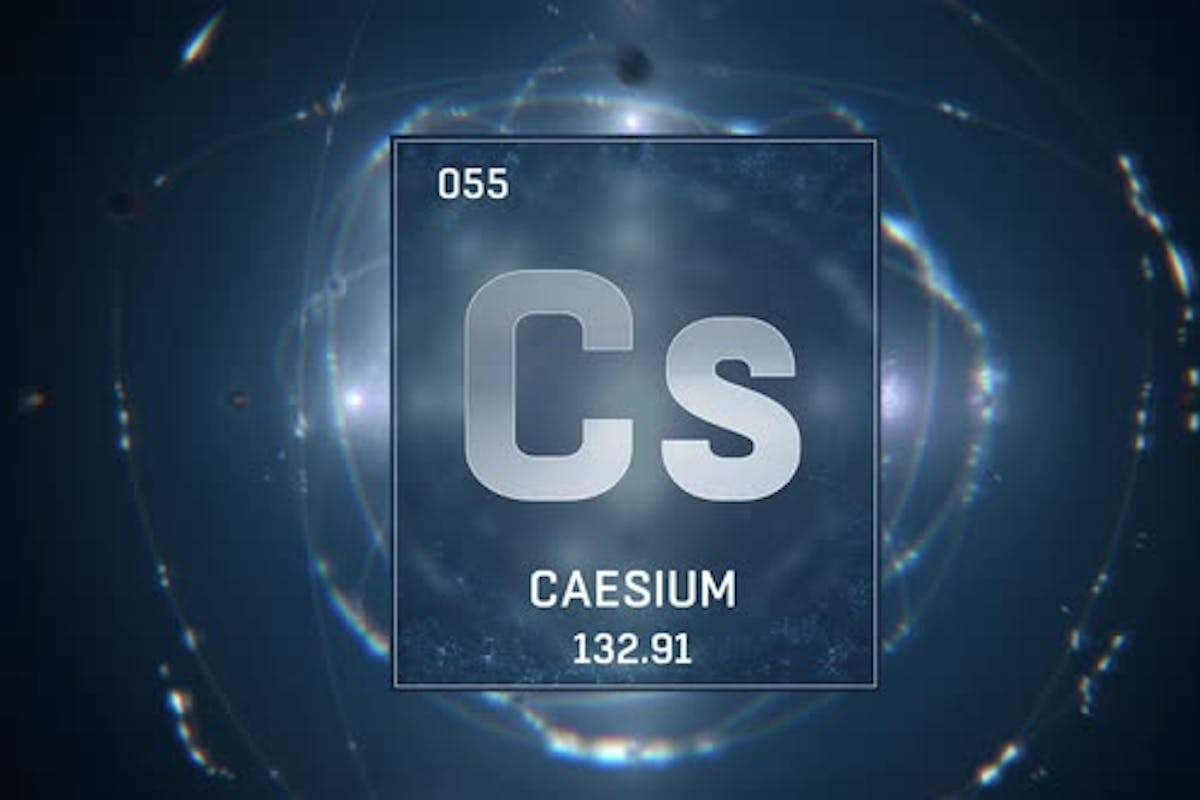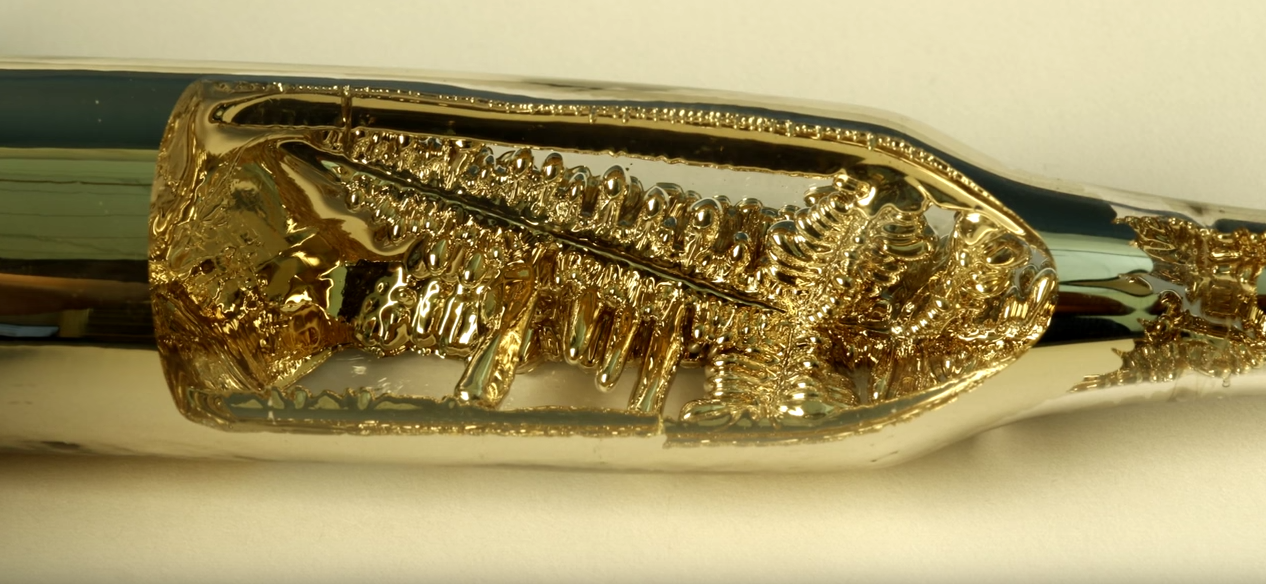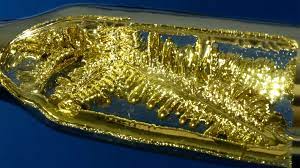Of all elements that are solid at room temperature, caesium is the
softest: it has a hardness of 0.2 Mohs. It is a very ductile, pale
metal, which darkens in the presence of trace amounts of oxygen. When
in the presence of mineral oil (where it is best kept during
transport), it loses its metallic lustre and takes on a duller, grey
appearance. It has a melting point of 28.5 °C (83.3 °F), making it one
of the few elemental metals that are liquid near room temperature.
Mercury is the only stable elemental metal with a known melting point
lower than caesium.In addition, the metal has a rather low boiling
point, 641 °C (1,186 °F), the lowest of all metals other than mercury.
Its compounds burn with a blue or violet colour.
Caesium forms alloys with the other alkali metals, gold, and mercury
(amalgams). At temperatures below 650 °C (1,202 °F), it does not alloy
with cobalt, iron, molybdenum, nickel, platinum, tantalum, or
tungsten. It forms well-defined intermetallic compounds with antimony,
gallium, indium, and thorium, which are photosensitive. It mixes with
all the other alkali metals (except lithium); the alloy with a molar
distribution of 41% caesium, 47% potassium, and 12% sodium has the
lowest melting point of any known metal alloy, at −78 °C (−108 °F). A
few amalgams have been studied: CsHg 2 is black with a purple metallic
lustre, while CsHg is golden-coloured, also with a metallic lustre.
The golden colour of caesium comes from the decreasing frequency of
light required to excite electrons of the alkali metals as the group
is descended. For lithium through rubidium this frequency is in the
ultraviolet, but for caesium it enters the blue–violet end of the
spectrum; in other words, the plasmonic frequency of the alkali metals
becomes lower from lithium to caesium. Thus caesium transmits and
partially absorbs violet light preferentially while other colours
(having lower frequency) are reflected; hence it appears yellowish.


